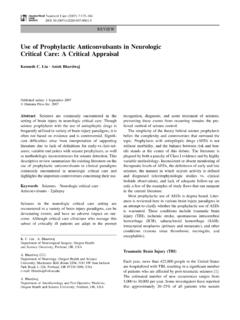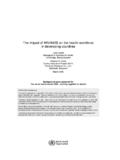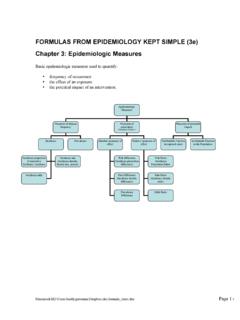Transcription of WORLD HEALTH STATISTICS 2010
1 WORLD HEALTH STATISTICS . 2010. WHO Library Cataloguing-in-Publication Data WORLD HEALTH STATISTICS 2010. status indicators. HEALTH . services - STATISTICS . expectancy. HEALTH Organization. ISBN 978 92 4 156398 7 (NLM classi cation: WA ). WORLD HEALTH Organization 2010. All rights reserved. Publications of the WORLD HEALTH Organization can be obtained from WHO Press, WORLD HEALTH Organization, 20 Avenue Appia, 1211 Geneva 27, Switzerland (tel.: +41 22 791 3264; fax: +41 22 791 4857;. e-mail: Requests for permission to reproduce or translate WHO publications whether for sale or for noncommercial distribution should be addressed to WHO Press, at the above address (fax: +41 22 791 4806;. e-mail: The designations employed and the presentation of the material in this publication do not imply the expression of any opinion whatsoever on the part of the WORLD HEALTH Organization concerning the legal status of any country, territory, city or area or of its authorities, or concerning the delimitation of its frontiers or boundaries.))
2 Dotted lines on maps represent approximate border lines for which there may not yet be full agreement. The mention of speci c companies or of certain manufacturers' products does not imply that they are endorsed or recommended by the WORLD HEALTH Organization in preference to others of a similar nature that are not mentioned. Errors and omissions excepted, the names of proprietary products are distinguished by initial capital letters. All reasonable precautions have been taken by the WORLD HEALTH Organization to verify the information contained in this publication. However, the published material is being distributed without warranty of any kind, either expressed or implied. The responsibility for the interpretation and use of the material lies with the reader.
3 In no event shall the WORLD HEALTH Organization be liable for damages arising from its use. Acknowledgements This publication was produced by the Department of HEALTH STATISTICS and Informatics of the Information, Evidence and Re- search Cluster, under the direction of Ties Boerma and Carla AbouZahr, assisted by Jessica Ho, Ahmadreza Hosseinpoor and Annet WR Mahanani, and in collaboration with WHO technical programmes and regional of ces and with other agencies in the United Nations system. The following WHO staff contributed to the content of this publication: Mohammed Ali, Khan Aseel, Eric Bertherat, Michel Beusenberg, Monika Bloessner, Sophie Bonjour, Cynthia Boschi Pinto, Sylvie Briand, Anthony Burton, Alexandra Cameron, Claire Chauvin, Doris Chou, Denis Daumerie, Mercedes de Onis, Chris Dye, Katya Fernandez-Vegas, Alexandra Fleischmann, Katherine Floyd, Daniela Fuhr, Marta Gacic Dobo, Jun Gao, Sandra Garnier, Andrea Gerger, Philippe Glaziou, Neeru Gupta, Alexandra Hill, Rifat Hossain, Chandika Indikadahena, Mie Inoue, Gauri Khanna, Nathalie Kizirian, Teena Kunjumen, Richard Laing, Enrique Loyola, Doris Ma Fat, Fatima Marinho, Ramon Martinez, Liz Mason, Colin Mathers, Jill Meloni, Anne-Beth Moller, Elizabeth Mumford, Chizuru Nishida, Sahar Parvez, William Perea Caro, Vladimir Pozniak.
4 Annette Pruss-Ustun, Dag Rekve, Randa Saadeh, Lale Say, Sunil Senanayake, William Soumbey-Alley, Yves Souteyrand, Tessa Tan-Torres, Hazim Timimi, Katelijn Vandemaele, Caroline Warming, Ryan Williams and Ju Yang. WHO is grateful to UNICEF (Danielle Burke, Claudia Cappa, Edilberto Loaiza, Holly Newby and Tessa Wardlaw); the Department of Economic and Social Affairs Population Divi- sion (Gerhard K Heilig and Fran ois Pelletier); the Centers for Disease Control and Prevention of the United States of America (Brandon O'Hara and Wick Warren); and the WORLD Bank (Shota Hatakeyama) for their valuable contributions. The publication was edited by Tony Waddell. Support for the online database was provided by Phillipe Boucher, Zoe Brillantes, Steve Moore, John Rawlinson, Florence Rusciano and Knut Staring.
5 Production support was provided by the Department of Knowledge Management and Sharing, including Caroline Allsopp, Ian Coltart and Maryvonne Grisetti. Graphic design and layout was by Sophie Guetaneh Aguettant and Florence Rusciano. We thank Petra Schuster for her administrative support. Cover design: Michel Beusenberg, Sophie Guetaneh Aguettant and Denis Meissner. Printed in France. 2. Table of Contents Introduction 8. Part I. HEALTH -related Millennium Development Goals 11. Summary of status and trends 12. Regional and country charts 1. Children aged <5 years underweight (%) 23. 2. Under- ve mortality rate (probability of dying by age 5 per 1000 live births) 24. 3. Measles immunization coverage among 1-year-olds (%) 25. 4. Maternal mortality ratio (per 100 000 live births) 26.
6 5. Births attended by skilled HEALTH personnel (%) 27. 6. Contraceptive prevalence (%) 28. 7. Adolescent fertility rate (per 1000 girls aged 15 19 years) 29. 8. Antenatal care coverage (%): at least 1 visit and at least 4 visits 30. 9. Unmet need for family planning (%) 31. 10. Prevalence of HIV among adults aged 15 49 years (%) 32. 11. Males aged 15 24 years with comprehensive correct knowledge of HIV/AIDS (%) 33. 12. Females aged 15 24 years with comprehensive correct knowledge of HIV/AIDS (%) 34. 13. Antiretroviral therapy coverage among people with advanced HIV infection (%) 35. 14. Malaria mortality rate (per 100 000 population) 36. 15. Children aged <5 years sleeping under insecticide-treated nets (%) 37. 16. Children aged <5 years with fever who received treatment with any antimalarial (%) 38.
7 17. Tuberculosis mortality rate among HIV-negative people (per 100 000 population) 39. 18. Population using improved drinking-water sources (%) 40. 19. Population using improved sanitation (%) 41. Part II. Global HEALTH indicators 43. Table 1 mortality and burden of disease 45. Life expectancy at birth (years). Healthy life expectancy (HALE) at birth (years). Neonatal mortality rate (per 1000 live births). Infant mortality rate (probability of dying by age 1 per 1000 live births). Under- ve mortality rate (probability of dying by age 5 per 1000 live births). Adult mortality rate (probability of dying between 15 and 60 years per 1000 population). 3. Table 2 Cause-speci c mortality and morbidity 59. mortality Maternal mortality ratio (per 100 000 live births).
8 Cause-speci c mortality rate (per 100 000 population). Age- standardized mortality rates by cause (per 100 000 population). Distribution of years of life lost by broader causes (%). Distribution of causes of death among children aged <5 years (%). Morbidity Prevalence of tuberculosis (per 100 000 population). Incidence of tuberculosis (per 100 000 population per year). Prevalence of HIV among adults aged 15 49 years (%). Table 3 Selected infectious diseases : number of reported cases 73. Cholera Diphtheria H5N1 in uenza Japanese encephalitis Leprosy Malaria Measles Meningitis Mumps Pertussis Plague Poliomyelitis Congenital rubella syndrome Rubella Neonatal tetanus Total tetanus Tuberculosis Yellow fever Table 4 HEALTH service coverage 85. Antenatal care coverage (%).
9 Births attended by skilled HEALTH personnel (%). Births by caesarean section (%). Neonates protected at birth against neonatal tetanus (%). Immunization coverage among 1-year-olds (%). Children aged 6 59 months who received vitamin A supplementation (%). Children aged <5 years sleeping under insecticide-treated nets (%). 4. Children aged <5 years with fever who received treatment with any antimalarial (%). Children aged <5 years with ARI symptoms taken to facility (%). Children aged <5 years with diarrhoea receiving ORT (%). Unmet need for family planning (%). Contraceptive prevalence (%). Antiretroviral therapy coverage among HIV-infected pregnant women for PMTCT (%). Antiretroviral therapy coverage among people with advanced HIV infection (%). Smear-positive tuberculosis case-detection rate (%).
10 Smear-positive tuberculosis treatment-success rate (%). Table 5 Risk factors 99. Population using improved drinking-water sources (%). Population using improved sanitation (%). Population using solid fuels (%). Low-birth-weight newborns (%). Infants exclusively breastfed for the rst 6 months of life (%). Children aged <5 years stunted (%). Children aged <5 years underweight (%). Children aged <5 years overweight (%). Adults aged 15 years who are obese (%). Alcohol consumption among adults aged 15 years (litres of pure alcohol per person per year). Prevalence of smoking any tobacco product among adults aged 15 years (%). Prevalence of current tobacco use among adolescents aged 13 15 years (%). Prevalence of condom use by adults aged 15 49 years at higher-risk sex (%).















